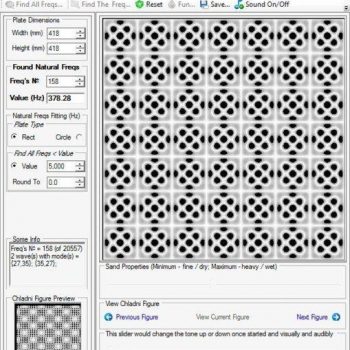

It is challenging to accomplish various programmable particles patterning by acoustic radiation force. Additionally, the acoustic potential field is limited by the wavelength due to the excitation of narrow frequency band, which is only suitable for local trapping and translation of particles. These patterns and trajectories manipulation of particles have been limited to nodal lines by the prefabricated acoustic structures. Existing acoustical methods for particles manipulation are developed by designing the acoustic structures or modulating the transducers arrays. This study not only fills the gap between the emerging fields of acoustofluidics and acoustic black holes but also leads to a class of AFBH-based in-droplet particle manipulation toolsets with great potential for many applications, such as biosensing, point-of-care testing, and drug screening.Īcoustic radiation force has been extensively investigated to trap and spatially manipulate particles into various patterns. We investigated the AFBH-enabled wave energy trapping and wavelength shrinking effects, as well as the trapped wave energy–induced acoustic radiation forces on particles and acoustic streaming in droplets. This study presents acoustofluidic black holes (AFBHs) that leverage controlled interactions between AFBH-trapped acoustic wave energy and particles in droplets to enable versatile particle manipulation functionalities, such as translation, concentration, and patterning of particles. However, no studies have considered the linear and nonlinear effects of acoustic black holes on micro/nanoparticles in fluids. We show that, for higher modes, this movement can appear as a collective rotation of the beads in the manner of a “farandole.”Īcoustic black holes offer superior capabilities for slowing down and trapping acoustic waves for various applications such as metastructures, energy harvesting, and vibration and noise control.


Interestingly, a symmetry breaking phenomenon together with the streaming can trigger movements of beads departing from one cluster to another. Here, we report that for micrometric beads larger than the inner streaming layer, the microscale streaming in the vicinity of the plate tends to gather particles in antinodal regions of vibrations yielding to patterns in good agreement with the predicted modes for a liquid-loaded plate. Unlike the well-known effect in a gaseous environment at the macroscale, where gravity effects are generally dominant, leading particles towards the nodal regions of displacement, we show that the combined effects of an ultrathin plate excited at low frequency (yielding to subsonic waves) together with reduced gravity (arising from buoyancy) will enhance the importance of microstreaming in the Chladni problem. By means of ultrathin silicon membranes excited in the low ultrasound range, we show for the first time that it is possible to form two-dimensional Chladni patterns of microbeads in liquid.


 0 kommentar(er)
0 kommentar(er)
